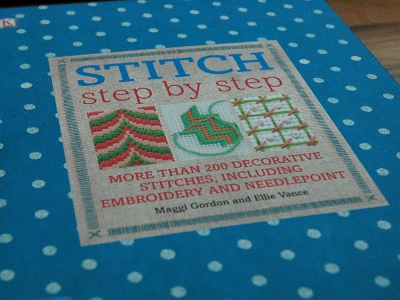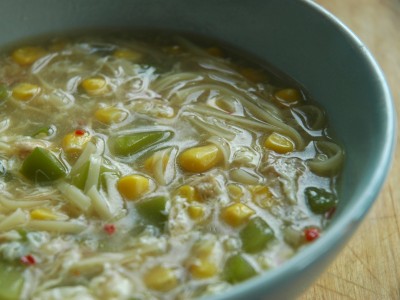The financial pros and cons for building up a food store/pantry
Writing about my “I’ll keep a store cupboard in case zombies attack!” paranoia yesterday (ahem) reminded me that I wrote something for a personal finance website last year but for some reason, didn’t get around to sending it over. I’ve re-edited it to make it suitable for here/now but have kept it purely about the financial side of things. I would love to hear your thoughts on it.
Over the last few years, we seem to be experiencing more and more cases of extreme weather and natural disasters. This year in the UK, we’ve had an unusually wet summer, leading to flooding, and elsewhere around the northern hemisphere, it’s been too hot, which has caused fires. There have also been unseasonal hurricanes/tornados, and while we’ve been comparatively lucky so far this year, 2011 was horrendous for other natural disasters such as the earthquakes in New Zealand and the earthquake/tsunami in Japan.
There’s no question that having a small supply for food and water is essential if bad weather is predicted and it’s important to maintain emergency supplies in case an unforeseen disaster strikes. But I’ve recently been considering the financial pros and cons of keeping a larger store pantry.
Why it makes financial sense to keep a large food store at home
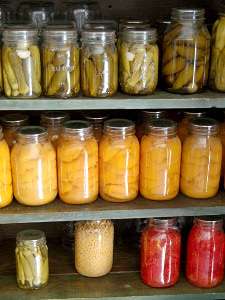 Aside from the security of having emergency supplies when needed, the largest day-to-day benefits of maintaining a large store at home are the financial ones. Many people with large food stores grow and/or preserve a lot of their own food when it’s in season so have put-up supplies that are a lot cheaper than it would cost to buy them ready-made in the shops/out of season.
Aside from the security of having emergency supplies when needed, the largest day-to-day benefits of maintaining a large store at home are the financial ones. Many people with large food stores grow and/or preserve a lot of their own food when it’s in season so have put-up supplies that are a lot cheaper than it would cost to buy them ready-made in the shops/out of season.
Certain items (such as sacks of wheat berries, dried pulses or rice) can be bulk bought, resulting in a cheaper cost-per-serving, and in many places can also be bought direct from the producer or through a not-for-profit co-op, cutting the price even further.
Having a well-stocked store and list of “store-cupboard recipes” should also reduce the amount of times/frequency with which you visit your local supermarket. When you shop your own pantry, you’re not going to get persuaded to part with a few pounds on unnecessary temptations and treats. Depending on how far you are from your local shops, that may also save a considerable amount of money in fuel/public transport costs too, as well as time.
As well as saving money directly and indirectly in the first place, a large pantry is also essentially a saving scheme. In the UK interest rates on savings accounts are considerably lower than the rate of inflation so our bank savings are actually shrinking in real terms while food prices are rising. Items bulk-bought a year ago will have been cheaper in both ways: the sticker price will have been less and our actual money will have gone further too.
When keeping a large food store at home can cost you money
 However, while our bank savings may be slowly shrinking, at least they’re not risk of going stale, mouldy or being eaten by rodents (or at least I hope not). Of course, those risks can be minimised with good stock rotation and appropriate storage containers – but purpose-bought storage containers can be expensive. Admittedly they’re reusable and you should get years of use from them but there is still an initial start-up cost. In fact, every aspect of creating a store cupboard involves upfront spending that some people may not be able to afford while living hand-to-mouth. It also requires ongoing maintenance and attention, time which might be better spent saving money elsewhere or increasing the household income someway.
However, while our bank savings may be slowly shrinking, at least they’re not risk of going stale, mouldy or being eaten by rodents (or at least I hope not). Of course, those risks can be minimised with good stock rotation and appropriate storage containers – but purpose-bought storage containers can be expensive. Admittedly they’re reusable and you should get years of use from them but there is still an initial start-up cost. In fact, every aspect of creating a store cupboard involves upfront spending that some people may not be able to afford while living hand-to-mouth. It also requires ongoing maintenance and attention, time which might be better spent saving money elsewhere or increasing the household income someway.
In places with very hot summers and cold or damp winters, extra care has to be taken about where the store is located to avoid spoilage – in practical terms, that generally means in air-conditioned/heated parts of the house rather than in an outhouse or garage. There are plenty of clever tips to “hide” bulk-bought items around the home but your heating/cooling bills may increase if you have to control temperature for the sake of the food when you’d ordinarily be out of the house (eg, during the day or on holiday). Food stored in freezers is obviously less affected by seasonal fluctuations but has a year-long power cost that should be considered: new, efficient freezers in suitable locations in the home are pretty cheap really but older, less efficient freezers cost far more to run. We usually keep our freezer well-stocked, with batch home-cooked “ready meals” and direct-from-the-local-farmer organic meat, which we buy in bulk but is still pretty expensive. If the freezer broke or we lost power for an extended period of time, we’d lose (or have to use ASAP) meat which represents a considerable amount of money. (Our household insurance would cover it, but with our excess, it wouldn’t be worth claiming.)
Aside from spoilage worries, tastes also change (especially in children) and dietary issues/allergies can develop, which could result in a lot of food you can no longer eat. If the food is still good, just no longer wanted, you could sell or barter the excess for something you can still eat – but there is still a chance that you’ll be left with money locked up in food that’ll ultimately go in the bin.
Are there any financial pros/cons on building up a food store/pantry that I’ve missed? Do you have any tips for setting up/maintaining a larder from a financial point of view?
(Can photo by CWMGary)
Read MoreHow I lead a green and frugal life by Lily-dog
It’s two years to the day since we brought Lily-dog home so I asked her to put some words together about how she leads a simple, green & frugal life with us.

Hi! Hi! Hi! Hi! Hi! Sorry, got a bit overexcited there, I do like meeting new people. Would you like me to bring you a shoe? Because I can go and get one if you like? Here! Here’s a shoe. I hope you like it. It’s my shoe. Don’t try to take my shoe! I like shoes!
Ok, ok, I’ll put the shoe down and start telling you what you want to hear. I’m not quite sure what the female feedy-huggy one has asked of me because I am a dog but I’ll try my best and will try very hard not to randomly woof. Although I am told I enunciate my woof splendidly, with a proper “wuh” at the beginning and everything. Wuh-oof.
So, yes, I have lived here for two years now and I think I lead a pretty green & frugal life. Well, a white-and-brown frugal life.
I grow my own fur so I don’t need clothes – 12 items in ’11? Pff! I had less that 12 items of clothing in 11 years! – and my fur can be composted when I don’t need it any more. I am also more than happy to snuggle underneath a duvet or a blanket too for extra warmth, no need for gas-guzzling central heating.
I do not – NOT!NOT!NOT! – like going in the car because they are expensive and noisy and sometimes involve journeys to the vets which are expensive, noisy and sometimes involve injections. If I had my way the tail-less ones would get rid of the car and we’d just walk everywhere we needed to go. Because the only place we need to go is the woods, right? Definitely NOT the vets, just the woods.
I like the woods. They are at the bottom of my garden. Walking in the woods is my favourite hobby and it makes me happy that we go there every day. If I wasn’t such a scaredy dog, I’d probably run around the woods on my own all day, making sure I’m instantly aware of any changes in smells and to check that those squirrels aren’t up to anything. Those squirrels are always up to something. That’s why they need barking at. “What are you up to, squirrels?” I say with one single well-enunciated woof. They know I’m onto them, that’s why they run.
I like eating things I find in the woods. Once I found a tuna sandwich. That was a good day. I carried it for about a minute to really savour it before I ate it. It was good. Mostly I just eat green things. My favourite green things are those sticky bud things which the curly haired one calls “cleavers” but I also like some bits of grass. The curly-haired one calls this “foraging” and says it’s a green and frugal thing but I just think of it as walking snack time. The curly-haired one is good and puts green things in pots for me to snack on in the garden too. They’re at dog-mouth height so they must be for me.
Inside the house, I am the good one. I’m the one that helps reduce food waste by SELFLESSLY cleaning up any scraps of food that drop on the floor, any food the cats might leave, and any eggs that get dropped or cracked. It has been said by a certain curly-haired person who shall remain nameless (because I don’t understand the concept of names really) that I sometimes cause the eggs to get broken by nudging them off a table or trying to trip up one of the humans when they’re carrying them up from the chickens but THAT IS DOWNRIGHT LIES. I am a good dog, I tell you.
Speaking of the chickens, they’re fascinating, aren’t they? Their home smells of such amazing things, as do their bottoms. I must admit that I did try to eat them at first (the whole chickens, not just their bottoms) but now I am just happy to watch them. Watch them and sniff them. Mmm, sniffing.
I like sniffing the cats too and they generally sniff back although I think their “eeeuggh!” faces are at least sometimes uncalled for. I do have soaks in the stream as often as I’m allowed so in my humble opinion, I’m very very clean and delightfully fragrant. And the curly one makes me have showers inside the bathroom rain box sometimes too. I prefer showers to baths, which I hear is a green thing: I like that they are shorter and don’t use as much water and that sometimes I can lick the water from the water thing. And after I’ve had a shower and am nice and clean, I help the two-legs clean the bathroom floor by wriggling on every single bit of it. No need for chemical cleaning gunk or even a mop. I’m such a helpful doggy.
I am also good at helping sort the rubbish. They sort it into “recycling”, “compost” and “rubbish” but they seem to miss that a lot of the so-called “rubbish” is actually perfectly reusable. No, I don’t mean reusable … what do I mean? Oh yes, chewable. I am very good at taking things out of the office or living room bins and “reusing” them into little tiny pieces. Sometimes it takes ages for the feedy-huggy people to get the picture: they put the perfectly chewable thing in the bin, I take it out again, they put it in again, I take it out again, they put it in again … I mean squirrels learn faster than these people. Wait… squirrels can learn things? Then they might get the better of me with their scheming ways! Oh no! I should go woof at them to make them forget!
To celebrate her two year anniversary with us, I made her a party hat – with brown-paper spaniel ears.

Some bribing with treats may have been necessary to get her to wear it.

Quite a lot of bribery ;)

Washing in winter: ideas for reducing laundry?
 Hi guys, sorry for the radio silence for the last few days – I went on a drama training course on Tuesday and have only just recovered ;) It was a lot of fun and very useful but I’m farrrrr too lazy for what was essentially a five hour exercise class. My neck is sore and I’ve a huge bruise on my knee from stage combat training but on the other hand, pretending to beat up a new colleague for 2.5hrs is a really good bonding experience :)
Hi guys, sorry for the radio silence for the last few days – I went on a drama training course on Tuesday and have only just recovered ;) It was a lot of fun and very useful but I’m farrrrr too lazy for what was essentially a five hour exercise class. My neck is sore and I’ve a huge bruise on my knee from stage combat training but on the other hand, pretending to beat up a new colleague for 2.5hrs is a really good bonding experience :)
ANYWAY, back to reality now. Lazy, lazy reality. I do like being lazy in winter because it can actually be an efficient/frugal way to do things: yesterday, John was out of the house all day so me & my aching body worked from bed until I had to go to out myself – no need for heating. And as I’ve said before when talking about linedrying laundry in winter, some things just get left until spring: throws/blankets get taken out of service, occasional wear that I won’t need for another few months can stay in the washing basket, and bedding etc gets left in the washing basket too until a nice drying-outside day, even if that’s another month (or longer) away. Lazy is good.
But I wondered what other strategies people use for reducing the amount of laundry they have to get through in winter. Aside from burst washing machine pipe incidents, the washing isn’t the hard part but the line drying is, particularly if you’re tight on space at home.
I remember looking into the issue of laundry a year or so ago and being shocked how much people wash clothes – a whole outfit in the wash every day – some people wash bedsheets & tumble dry every day. I mean, gosh! Around here, underwear gets changed every day, t-shirts every other day, jeans & jumpers not so much. They get washed when they’re dirty, which isn’t after one day for us desk jockeys. I also have different sets of clothes for different jobs – for example, my scruffs (for gardening/chicken coop cleaning/DIY) have a much higher dirtiness threshold than the nicer clothes I wear when I’m teaching.
How about you? Do you try to minimise the amount of washing you do in the winter (or all year around)? If so, what tactics do you use? If you don’t – how do you keep on top of it all in the cold days of winter?
Read MoreBook Review: Stitch Step by Step by Maggi Gordon and Ellie Vance
It was a moment of serendipity when I spotted this book, Stitch Step by Step by Maggi Gordon and Ellie Vance, on the “new additions” shelf at the library back in September – I didn’t know it but I was about to get poorly sick — not ill enough to just collapse in a heap but not well enough to, you know, move. I suddenly found myself with a lot of sewing playtime!
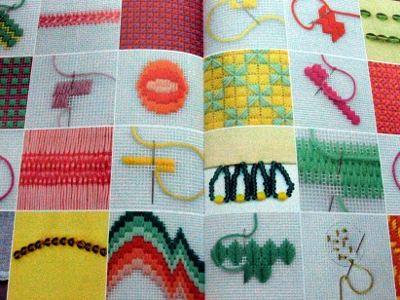
The design of the book grabbed me from the outset: the pretty blue/dotty cover; the clear, well laid out tutorial pages; and the stitch galleries, oh my, the stitch galleries.
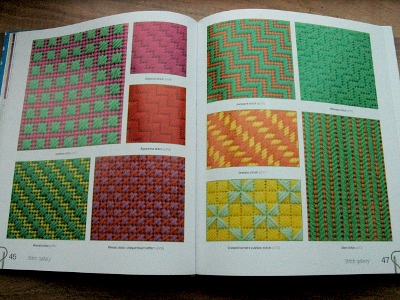
I think it’s worth noting that I’m quite new to embroidery. I’ve cross-stitched for a few years now but I’ve not spent a lot of time looking into the different stitches available when you break away from the cross (or fractions of it) and backstitches. The stitch galleries in this book really opened my eyes to the different possibilities – I could suddenly see the appeal of making samplers! As this is nearly all counted-thread work, it didn’t seem a million miles from my cross-stitching and it gave me the confident to jump straight into some stitching myself.

I’ll admit, I followed a handful of the tutorials because it was clear to see what to do from the stitch gallery pictures but those that I did follow were clear step-by-step guides as the title of the book suggests :) The pictures were crisp, with good fabric/thread contrast so it was easy to see what was going on. (The one I “chose” to take bad pictures of to illustrate this point is probably the least contrasting one but you can see the layout.)
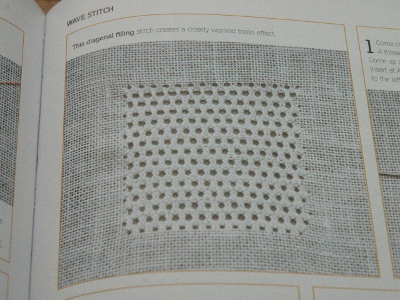
In addition to the colourful thread work, there were also sections on whitework – which was a new concept to me (the idea of using the stitches to open up holes in the fabric I mean, not just the white-on-white stitching), using beads & sequins and on designing as well as stitching Florentine/Bargello work. Purr. Me like!
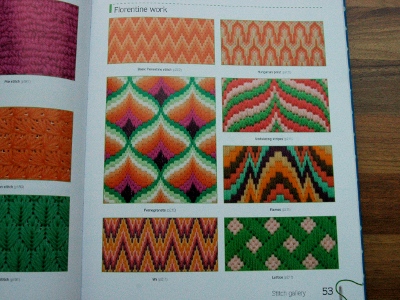
As with all tutorial books, they covered the basics as well – how to use embroidery hoops, useful tools, finishing and whatnot – which again, was useful for a newbie like me.
Overall, I didn’t read this book cover-to-cover or feel like I wanted to try every different stitch/tutorial – but it’s not for that: it’s for providing inspiration and reference, and I think it does those things very well.
I did have two minor problems with it though – both design issues. Firstly, I had the hardback version from the library. Apparently there is a paperback version available too — I think the hardback would be better than that but better still would have been a ring-bound hardback, that could have sat open of its own accord on my knee while I was stitching.
The second problem I had was a minor – but very annoying – thing: each page number was decorated with a cute image of a needle and thread. I would see it out of the corner of my eye and try to brush it away. On every. single. page. Sometimes multiple times on each page. ARRRGGGH!! ;)
All in though, I’m very glad I came across it and next time I’m in a sewing mindset (I’m all about crochet at the moment), I think I might have to add it to my bookshelf at home.
Read MoreMy ten favourite simple living/growing/cooking/making books
(Inspired by book-aholic buying behaviour this month, I’ve decided to have a bit of a book-themed week both here and on my recycling site, Recycle This.)
Despite living on the internet & using it/blogs for most of my day-to-day info, I’ve got quite a few simple living related books and as you might expect, some are better than others. Some were chosen after careful research, others randomly picks from charity shops & the like – but as is often the case, there is little correlation between that and which are the better books!
Here, in no particular order, are some of my favourites:
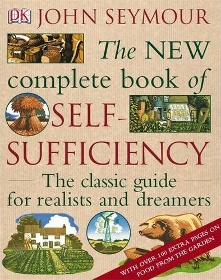
- The New Complete Book of Self-Sufficiency by John Seymour – this is a great overview book of so many different things. It’s admittedly more aspiration than practical for me at the moment – and because it covers so many different areas, it doesn’t feel like the most practical book anyway (it doesn’t have space to go into detailed how-tos/trouble-shooting on each different topic) but it’s still very useful. If I was fleeing to escape the zombie hordes*, this is probably the non-fiction book I’d grab.
Growing
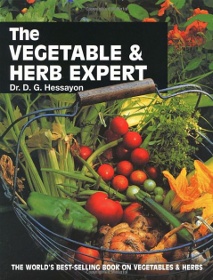
- The Vegetable & Herb Expert by DG Hessayon – my first veg growing book and the one I keep going back to over & over again. Not hugely detailed on each type & some bizarre comments about only eating chillis if they’re part of “your heritage”, but very clear, with lots of pictures (very useful when troubleshooting pests/diseases) and packed with useful info.
- Grow Your Own Vegetables by Joy Larkcom – this book is almost the opposite of the Hessayon – lots of detail but not anywhere near as easy to dip into and few illustrations. I like them together but would struggle with the Larkcom on its own.
- The Edible Container Garden: Fresh Food from Tiny Spaces by Michael Guerra – I was a little disappointed when I got this as it includes a lot of whitespace, big pretty rather than purposeful pictures and a lot of general overview text — but the 30 pages on “what shall I grow?” made the book worth it – very useful reference information about varieties, pot depths etc. I would recommend it to anyone who grows more than just the basic herbs in containers – but try to find a secondhand one so you don’t resent paying for the padding.
Ten minute chicken & sweetcorn noodle soup recipe
I wrote this back in August but it didn’t post for some reason. Now that soup season has properly started, we’re less interested in light soups – we want warming stodge! – but it’s still yummy :)
I usually make hearty, wintery soups but since it is technically summer at the moment, we’ve wanted lighter broths for our lunches. This chicken & sweetcorn noodle soup fits the bill nicely – not a giant overwhelming flavour bomb on our tastebuds but fresh & light, filling us up without the need for bread.
I make this whenever we’ve got some spare chicken stock – it’s a useful, quick lunch for us. If I’m thinking ahead, I put some vaguely suitable flavours in the stock – for example, extra black peppercorns, coriander seeds and galangal.
Quick chicken & sweetcorn noodle soup recipe
Serves 4 as a lunch
Ingredients
1.5ltrs of fresh chicken stock
150-200g-ish of chicken (either the already cooked bits stripped from the chicken carcass or a chicken breast)
A green pepper, finely diced
About 250-300g-ish of sweetcorn kernels
Pinch of chilli flakes/half a fresh chilli, very finely sliced
1 tbsp soy sauce
1 tbsp rice vinegar (or white wine vinegar)
1/2 tbsp of Worcestershire sauce
1 tbsp of honey
A nest of egg noodles (or pack of ramen noodles)
1 tbsp of cornflour, mixed into runny paste with a little water
1-2 eggs, whisked together in a bowl
Black pepper (to taste – but a fair bit)
Salt (to taste)
Optional extras to serve
Rounds of fresh chilli
Rounds of spring onion
Coriander leaves



